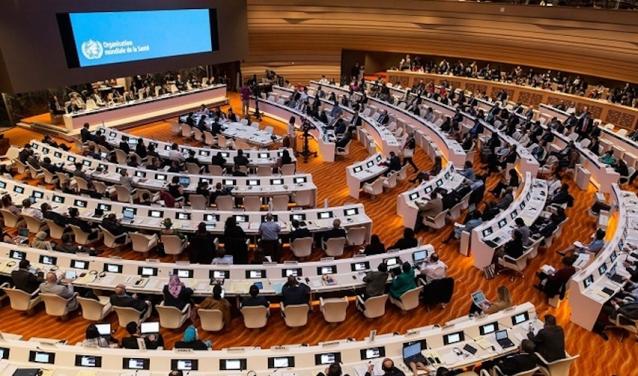The recently finalized draft of the World Health Organization’s pandemic agreement, concluded after over three years of negotiations, promises to reshape global health responses. However, as a concerned citizen, I question whether this legally binding pact truly serves the public or prioritizes control over sovereignty. Announced on April 16, 2025, the agreement aims to enhance global cooperation against future pandemics, learning from COVID-19’s devastating toll. Yet, its provisions, like the Pathogen Access and Benefit-Sharing System (PABS), raise red flags about equitable access and national autonomy. The absence of the United States in final talks, following President Trump’s withdrawal announcement further complicates its legitimacy. Even though Trump started the withdrawal process, the U.S. is still locked in until 2026, thanks to Biden’s push for International Health Regulation (IHR) amendments. So for now, America is still under their control. WHO News: https://www.who.int/
Agreement’s Hidden Costs
Moreover, the pandemic agreement’s focus on global coordination, such as a “One Health” approach and technology transfers, sounds noble but risks overreach. For instance, requiring nations to share pathogen data with pharmaceutical companies could undermine local innovation. Furthermore, the agreement’s call for coordinated supply chains and a global health workforce feels like a step toward centralized control. Additionally, the treaty mandates 24/7 surveillance, censorship of so-called “misinformation,” and mandatory funding—forcing nations to bankroll their own compliance.

While WHO Director-General Tedros Adhanom Ghebreyesus hails it as historic and the BBC says it’s to prevent “disorganization” next time. But what it really means is this: the WHO now claims authority over global supply chains, vaccine rollouts, and disease surveillance—run by an unelected body with zero accountability. I worry about enforcement. Countries have flouted International Health Regulations before, like China during early COVID-19. Thus, this pact may burden nations without guaranteeing compliance. CNN: https://www.who.int/

Sovereignty vs. Global Health
Furthermore, the pandemic agreement’s nod to state sovereignty seems hollow. The Pact emphasis on global frameworks over national policies could erode independence. For example, wealthier nations resisted mandatory technology transfers, prioritizing profit over equity. Meanwhile, poorer nations gain little leverage. Consequently, the agreement may widen inequalities rather than bridge them. The lack of clear consequences for non-compliance, as noted by experts, only deepens my skepticism. If adopted at the World Health Assembly in May, this pact could bind nations to vague commitments. NYT: https://www.nytimes.com/
Conclusion
While the pandemic agreement aims to fortify global health, its potential to undermine sovereignty and favor corporate interests demands scrutiny. We must question who truly benefits from this pact. Therefore, I urge readers to stay informed and hold leaders accountable. The world needs preparedness, but not at the cost of freedom. As we await the World Health Assembly’s decision, let’s ask: Will this agreement protect us or bind us to an unaccountable global system? UN News, France24Focus







🚨WHO’s Pandemic Pact is a TOTAL SHAM! They’re STEALING our sovereignty with 24/7 surveillance and Big Pharma handouts! America’s TRAPPED until 2026—thanks, Biden! WAKE UP, Patriots!